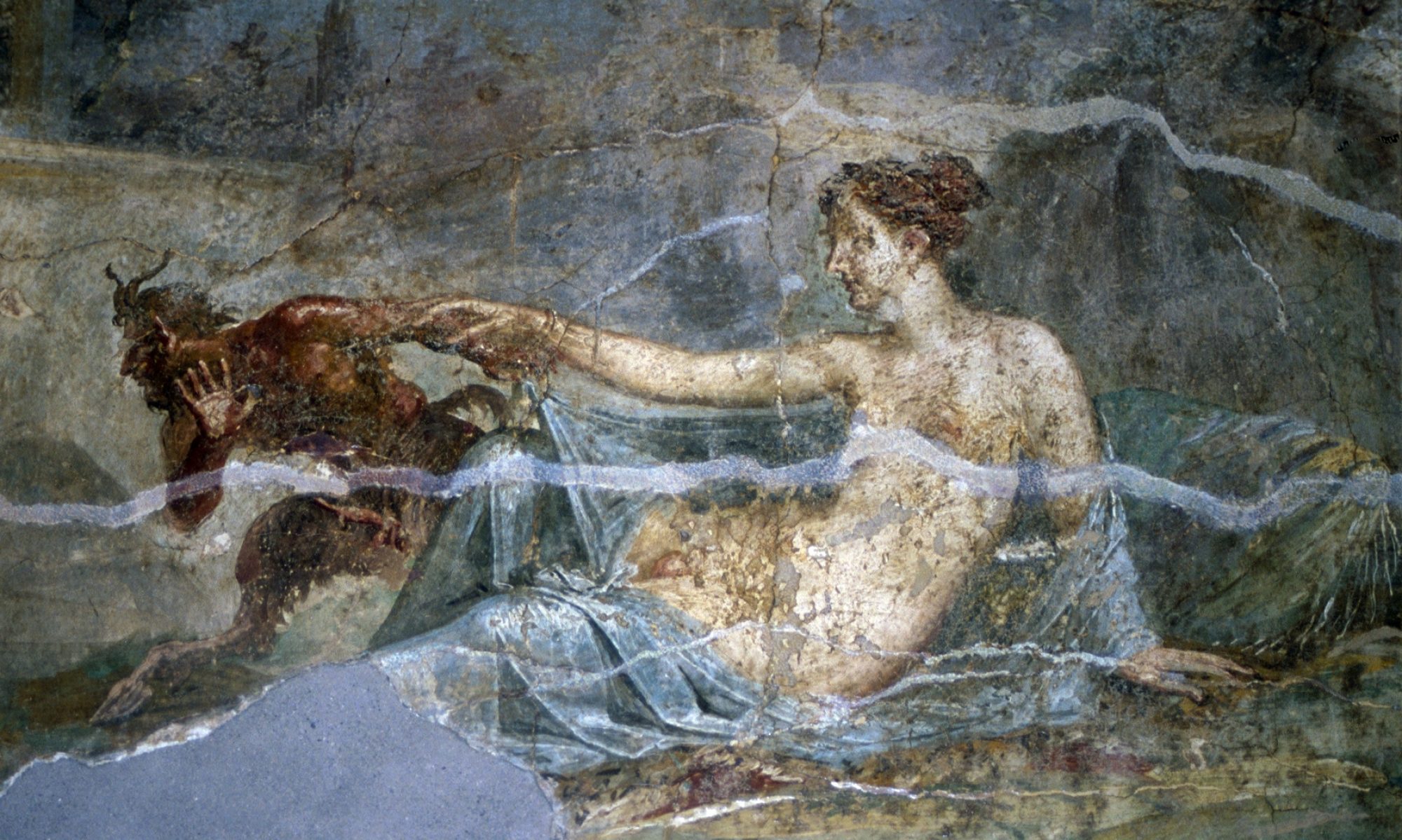This unit requires the use of hyphothe.is and the making annotations in a private group. The invitation to the private group can be found on Blackboard.





Why all these pictures?
This first unit we’re going to practice three things: reading primary evidence that is physical; reading primary evidence that is text-based; reading secondary literature. One of the goals is to get comfortable doing all three, but also in knowing the difference.
- Which of the objects illustrated above are interpretations of antiquity?
- Which were created in antiquity?
Only those that were created before c. 500 CE count as primary evidence in this class. In ancient history we still consider something primary evidence even if it was made 200 years or more after an event, because of the distance between us and the creation of that evidence.
The pictures above and those that follow are discussed at length in our reading (an older piece of scholarship but one of the few that really gets at these questions!). But BEFORE you do that reading, I want you to really look at all the pictures: what do you see? what do you think is going one? how can you tell who’s who? Even if you can’t tell the names, can you tell what sorts of people are being represented and what they are doing?


When we look a primary evidence that isn’t a text, that is material culture, there are some standard questions we need to ask to know how to use that piece of evidence:
Why was it made?
For whom? By whom? For what use?
How was it used?
What do we know about the type of object in general? Are there hints from where it was discovered? Where and in what context is it likely to have been used/seen?
Are there likely secondary audiences?
Not the people or person it was made for, but others who are likely to have seen in
Does it represent a serious investment?
Are the materials costly? Is the manufacture process expensive?
Why does it survive? What of its context has been lost?
Think about these questions in relation to the above objects but don’t worry too much about them right now. We’ll talk A LOT about these things in future units. This is the shallow end of the conversation.
When we consider textual primary evidence our questions aren’t that different:
Who wrote it? Where and when? What is the genre? What are the conventions of that genre? How well does it conform or not conform to those conventions. What is the purpose of the composition? By whom was it intended to be heard? (most ancient literature is heard, not read) In what sort of setting?
Who translated it? When? What might be lost in translation? (Comparing translations can help)
What does the author assume we know or are familiar with? What values do they assume we share? How do they use imagery and juxtaposition and other rhetorical tools to guide our interpretation?
Are we supposed to believe what we read? In what sense?
For this unit we will read and annotate using hypothes.is excerpts of two poems by a man named Hesiod who lived some time between c. 750 and 650 BCE on pennisular Greek and composed poems (did he write them down? maybe, maybe not) that were didactic (educational) in theme using the same meter (dactylic hexameter) as the Homeric tradition (epics, hymns). Major themes include creation and origins stories as well as farming and the nature of life. Works and Days is all about human life and the toils it involves. The Theogony is a creation narrative with genealogies sometimes compared to the surviving Babylonian genesis narratives (which in term are often compared to the Hebrew Genesis accounts). As you read and annotate the following keep the above questions in mind:
Excerpt from Works and Days (on a different website)
Excerpt from the Theogony in two side by side translations (PDF)
Once you’ve finished all this primary evidence, both material culture and texts, now we get to read a peer reviewed journal article that discusses this same evidence. (This is secondary literature).
Hurwit, Jeffrey M. “Beautiful Evil: Pandora and the Athena Parthenos.” American Journal of Archaeology 99, no. 2 (1995): 171-86. Accessed August 26, 2020. doi:10.2307/506338.
PDF for annotation using hypothes.is
When reading secondary literature in this course the biggest questions to keep in mind are:
- what is the main argument?
- what primary evidence is use to support this argument?
- is the argument convince?
There will be more guidance on this type of reading as we go along but this is a good start.
One fast interesting way to learn more about how a piece of scholarship has been received by more recent scholars is to use Google Scholar.
As you read this article you’ll come across references to the Lenormant Athena, an unfinished statue also based on the Athena from the Parthenon. For reference, higher resolution images are available of the original and a cast at Cornell University.
Below you will find even more images discussed in this article.




Ge also appears on electrum coins of Cyzicus c. 460-400 BCE




